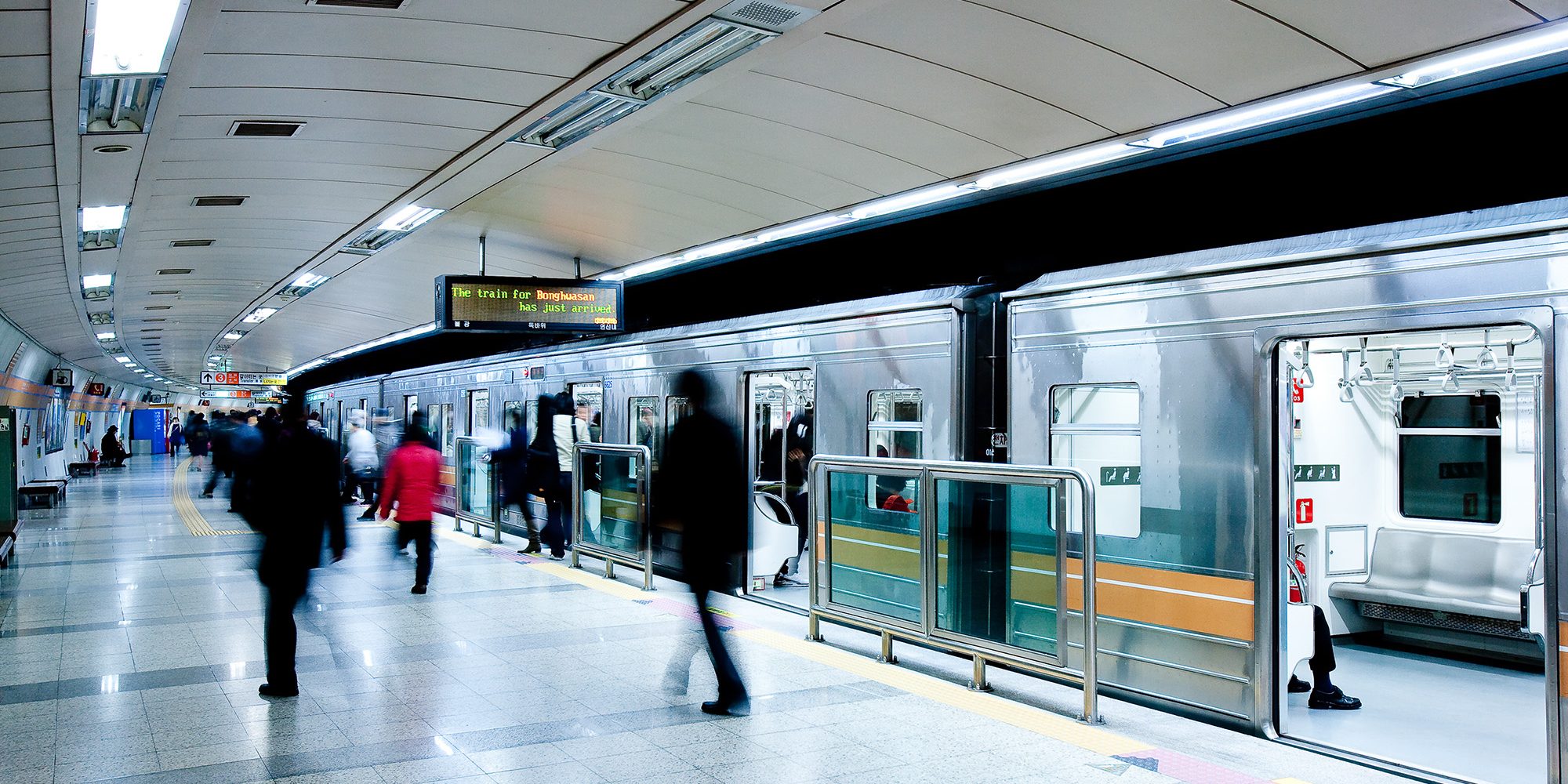Introduction
Subways are often the backbone of public transportation. They’re generally faster than buses, cover a wider range of locations, and can shuttle around millions of people every day. However, subways often have a multitude of issues, including congestion, uncleanliness and difficulty in navigation. Some of the most famous subway systems around the world, like the London Tube, the Tokyo Metro, and the New York Subway are all guilty of this. However, there is one metro system in the world that hardly has these problems, and that is the Seoul Metropolitan Subway System.
It’s like a dance. Music plays to announce the arrival of the train, and outside the safety gates, the riders stand to the left and right, leaving the center open. The train brakes squeal to a stop, and the doors open. On the platform, nobody moves. From the train people disembark, quickly making their way through the central path and to whatever location they’re off to next. Once they’re gone, the people on the platform move, entering the train and finding a location to stand or sit. An announcement states the doors are closing, and then the train is off again, all within a few seconds. The subway is a testament to Korean efficiency, and is representative of Korea’s economic growth and success.
History of the Seoul Metropolitan Subway System
Compared to many of the more famous subway systems, the Seoul Subway System is relatively new, as it is only about 50 years old. In 1970, the population was rapidly increasing, but the economy was still relatively fragile. Therefore, there was a large debate over the installation of a subway system, since the installation costs alone could seriously damage the growing economy. However, the need for a subway was clear, so development began. The first subway, now known as Line 1 originally only covered a distance of 7.8 kilometers, but now it covers a distance of around 200 kilometers. While it had a bit of a slow start, the number of metro users steadily grew, demanding an expansion of the metro, which resulted in the development of Line 2 a decade later, and Line 3 through Line 9 in the years that followed.
The Modern Seoul Metropolitan Subway System
These days, almost 7 million people take the subway everyday. The subway is highly efficient, which is partly thanks to the people who ride it. When a train arrives, the people waiting to get on will usually form lines to either side of the door, leaving space for people departing the train to exit through the middle. In this way, passengers embark and disembark within seconds, and there are few delays to the train. The Korean subway also provides free wifi. Therefore, it’s relatively common to see commuters on their phones in the subway. However, in general, everyone wears headphones, so the trains are relatively quiet save for the subway noises and occasional phone conversation. As a result, a lot of people sleep while on the subway trains. In Seoul, it’s quite common to see sleeping professionals snoozing on the subway, sometimes in the most uncomfortable looking positions. The most amazing thing is that these people will almost always wake up before their stop and get off the train with no problem after having been sound asleep just moments before.

The Seoul Metropolitan Subway System Criticism
The quality of the subway means that many people choose to use it. However, this comes with a plethora of problems. With the heavy reliance on the subway system, the Seoul subways consistently operate above carrying capacity during peak rush hours. As a result, some trains have been dubbed “hell trains” due to the amount of people and difficulty it is to ride these trains. Officials attempt to limit how many people can board, but it’s only a temporary solution that isn’t sustainable. Without a concrete solution, we can predict that overcrowding will only become more serious as the necessity for subways grows.
Written by: Mackenzie Migdal
Originally from New Mexico in the United States. Current fifth-year undergraduate at the University of Hawaii at Mānoa as a B.A. Candidate for Korean for Professionals and a B.A. Candidate for Political Science. Exchange student at Korea University, Intern at VANK (Voluntary Agency Network of Korea)
